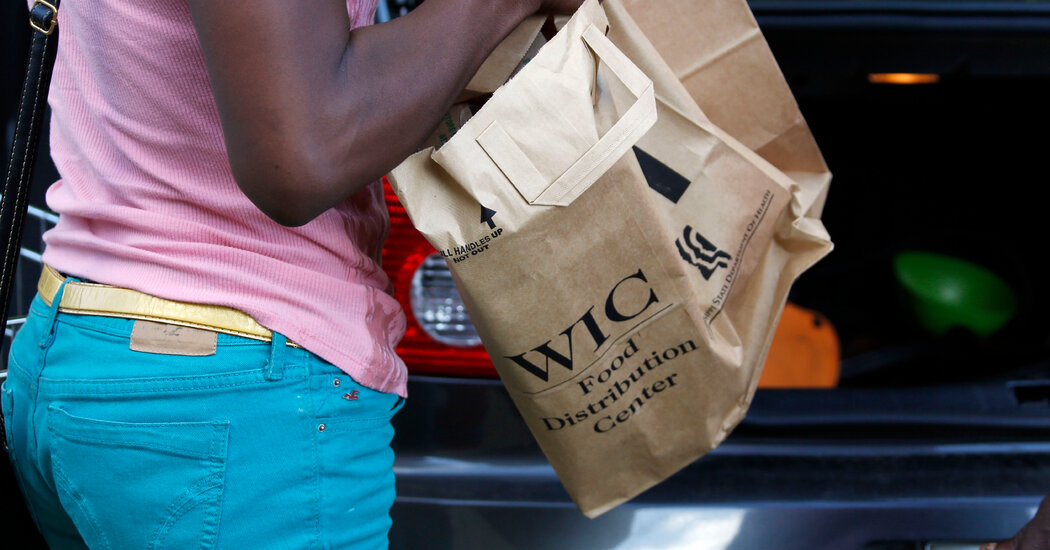The program, which provides free groceries to millions of women and children nationwide, now covers naan, soy milk, teff and more.
Ileana Arroyo pushed a shopping cart down tidy aisles of fresh produce, whole grains, baby food and other items at a small grocery store in the Humboldt Park neighborhood of Chicago. Ms. Arroyo, who was shopping for food for her four children, scanned a wall of cereal. Above the brightly colored boxes, a sign read, “Be the mom you want to be.”
The store is part of a federal food program that provides free groceries and baby formula to about 6.6 million low-income women and children in the United States, including nearly 40 percent of all infants nationwide. But despite its broad reach, participation in the Special Supplemental Nutrition Program for Women, Infants and Children, known as WIC, has fallen in recent years. Only half of eligible women and children are enrolled.
Experts say the program’s limited food choices have been a barrier. In response, program officials announced this year that WIC would significantly broaden the variety of foods on offer, hoping to reach a bigger and more diverse group of women and children. Lactose-intolerant and vegan participants can now buy soy or almond milk, instead of dairy products. Grain choices, once limited to pasta and sliced bread, now include amaranth, blue corn tortillas, wild rice, teff, naan and quinoa. And all recipients will have access to more fruit and vegetables. States have two years to implement the changes, but some, including Illinois, have already started rolling them out.
At the heart of the changes is the growing body of evidence that good food is essential to health, protecting women from pregnancy complications, saving infants’ lives and reducing the rate of malnutrition in children.
Loading up her minivan after checking out, Ms. Arroyo, 34, said that the program had helped her save money every month since she enrolled in 2021. Now, the expanded options have made it easier to make more nutritious meals her children will eat.
“Before, they didn’t have Hispanic food, like Goya beans,” she said. “Now they are offering more of the foods that I actually feed my kids.”
